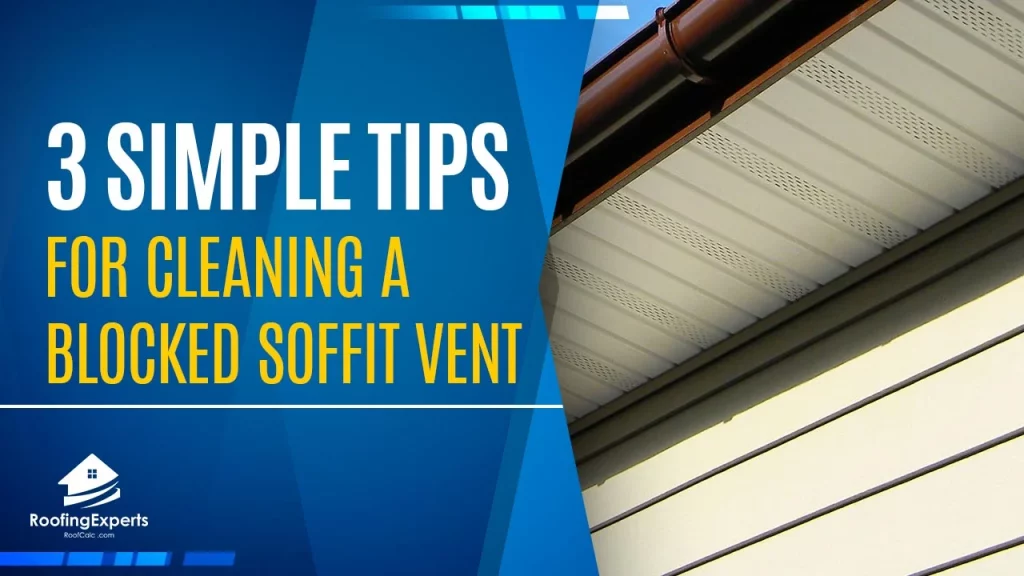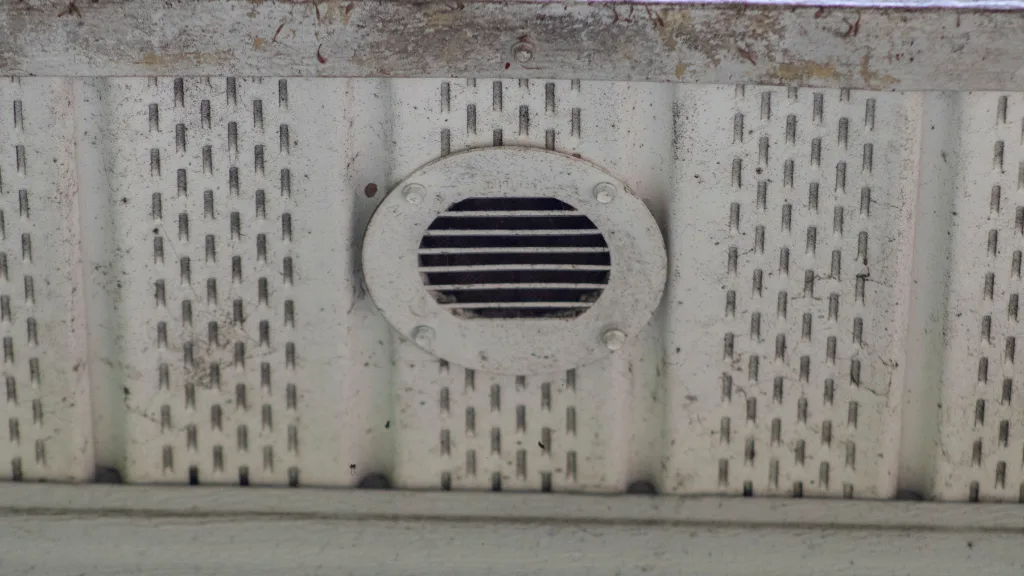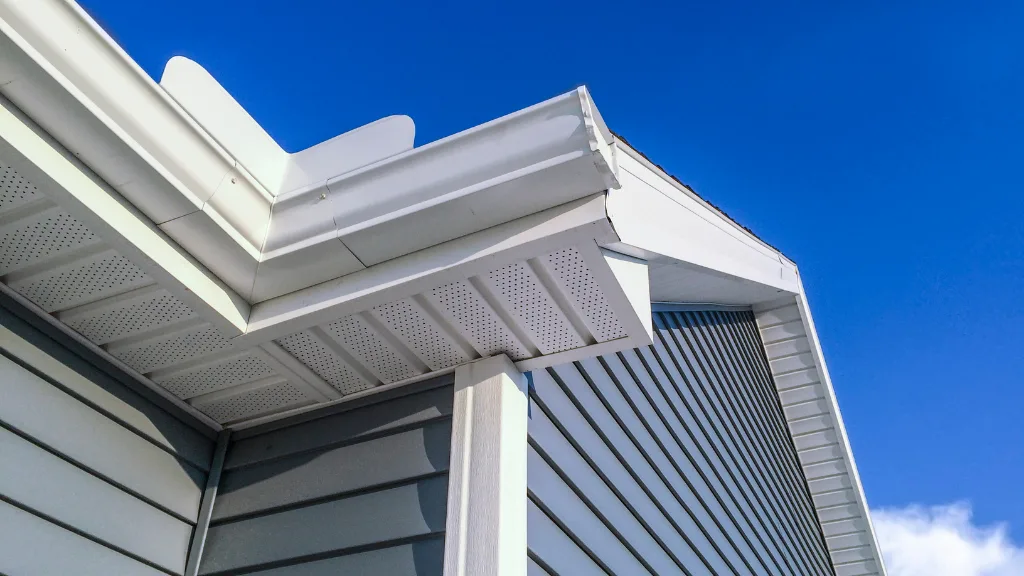
As homeowners, we take great pride in our homes and love to keep them clean. However, one area that is often overlooked when it comes to cleaning is the soffit vents on your roof.
Soffit vents allow for airflow and ventilation into your attic space, which help with air circulation and prevent excess moisture from building up inside of your home.
Unfortunately, these vents can become blocked over time by things such as dirt or leaves falling down through the rain gutters above them.
If left too long, a blocked soffit vent can become a breeding ground for mold and mildew, which poses serious health risks to your family.
Plus, once the ventilation of your home is compromised it creates an environment where excess moisture from cooking or showering will begin to pool inside of your walls.
What are the 3 simple tips in cleaning a blocked soffit vent?
- Using a stiff brush and vacuum cleaner to remove the debris.
- If that doesn’t work, try using compressed air to get rid of the blockage.
- Finally, you may resort to hiring an HVAC specialist if neither solution works for cleaning your soffit vent. However, this method is the most expensive.
However, there are still some simple ways to clean soffit vents on your own.
Step by step guide in cleaning Blocked Soffit Vent
If you’re looking for a DIY way to clean out your blocked soffit vent then we have some simple steps that should help!
First Step: If the vent is covered in dirt or leaves it’s easiest to vacuum them off with a shop vac. Just be sure that you’re using only the hose attachment without any of the tools inside the shop vac.
Second Step: If you don’t have a vacuum, use a small rake and gently scrape off any dirt or leaves that are caked on top of the vent.
Third Step: You’ll then need to use your hose to spray it down with water, which will loosen any remaining debris that you can then knock off with the rake.
Fourth Step: Make sure to replace your vent cover once it’s clean, and if there are any screws attaching it simply screw them back in place.
Fifth Step: Lastly, make a note of when you last cleaned out these vents or what caused them to become blocked, so that you can schedule to have them cleaned at least once per year.
Following these steps should help you to keep your home clean and healthy for years to come!
How to know if your soffit vent is blocked?
If you notice any of the following signs, it’s likely that your soffit vents are blocked.
- Excess moisture in walls or ceilings
- Mold and mildew growing inside home near lower levels
- Musty smell throughout house
- Condensation on windows during cooler weather times of year (e.g. fall and winter)
- Airflow coming from vents not present when the fan is turned on in bathrooms or kitchens (e.g. fans are moving, but no air is actually blowing out of them).
- Airflow coming from vents in the middle of summer when no one is home or using fans.
Experiencing any of these issues should be a clear indicator that your soffit vent needs to be cleaned.

What are the disadvantages of not having a soffit vent?
The biggest consequence of having a blocked soffit vent is excess moisture that can lead to mold and mildew growth, which poses serious health risks.
Plus, once the ventilation of your home is compromised it creates an environment where excess moisture from cooking or showering will begin to pool inside of your walls.
This can lead to rot and other damage that could cost you significant amounts of money in repairs down the road.
Other disadvantages include having musty smelling air circulating throughout your house if the soffit vents aren’t being used.
- If you have a gas fireplace in your home and it’s near where the soffit vents are located, there’s a chance that carbon monoxide could enter into your house through them instead of going outside as intended.
- Not only is this dangerous for anyone inside of your home, but it can also harm the environment.
- If the ventilation of your home isn’t working properly it could cause problems with condensation inside during cooler weather times.
- This creates an environment where damage from water seeping into walls will be more likely to occur.
If you notice any of the issues listed previously, or are noticing that your ceiling fan isn’t pushing out air when turned on, it’s best to have a professional check your vents for blockages and other damage.
Tips on how to maintain Soffit Vent
There are several tips that can help to prolong the lifespan of your soffit vents:
1. The best way is to check them at least once per month, just walk around your home and look up into both attics where soffit vents are usually located.
2. If you notice any kind of debris covering them, simply use a vacuum or shop vac to remove it so air can circulate through once again.
You’ll want to do this at the very least three times per year for each area where your vent is located (e.g., one time in spring, summer and fall).
3. If you notice any water pooling near the vents, make sure to clean it up as soon as possible.
4. Water can seep inside of your home through these openings if they’re not properly maintained over time.
If there’s a big puddle that has formed or you don’t feel comfortable cleaning it yourself, call in a professional to take care of it for you.
5. If your soffit vents are blocked, the best way to remove debris is by using an air compressor or leaf blower.
6. Just be sure that whatever product you’re using isn’t sharp enough to puncture any part of the vent’s structure if possible, because this could cause damage to your home.
7. Spray some WD40 on the vent’s exterior, which will help loosen it up for cleaning or removal of debris more easily if they’re blocked.
8. If you notice that airflow is coming out of them during cooler weather times when no one is around and/or using fans in the house, this could be a sign that your soffit vents are blocked.
9. You should never try to remove it yourself, even if you have the tools necessary since this could lead to damage of some kind being done to either their exterior or interior structure which can also cause problems for homeowners down the road.
10. If there’s any excess debris on them once they’ve been cleaned, make sure to remove it so that airflow can continue through them easily.
If you’re unsure of the best way to clean your vents or if they need some type of repair work done on their exterior structure, then don’t hesitate to call in a professional who has experience with this kind of job.
They’ll be able to do it quickly, safely and easily so you won’t have to worry about it anymore.
How to maintain the ventilation?
There are some other things that can be done in order to maintain the ventilation of your home properly if you don’t want to clean or check on them yourself at least once per month.
1. One way is by having an HVAC specialist come out and clean them for you.
This can be done once per year and will ensure they’re functioning correctly over time, which means less work on your part as a homeowner to do this kind of maintenance or repair work.
2. It’s also important that you make sure these vents are the proper size so air is able to flow through properly without being impeded at any point.
Vents that are too small will cause your HVAC system to work harder, which can also lead to problems down the road.
Final Thoughts
Cleaning a soffit vent is an important part of maintaining the air quality in your home.
We’ve included some simple steps that will help you do it safely and effectively, as well as how to avoid potential hazards like mold growing unchecked on the surface of your ducts.
If this blog post has been helpful for you please share with your friends!


